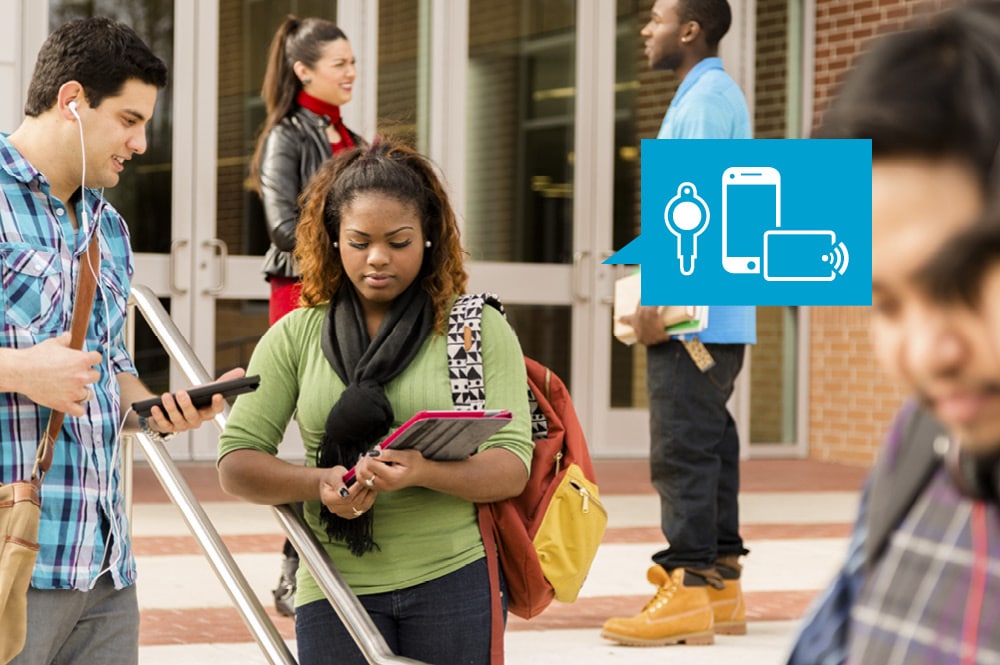Three ways wireless access control boosted security in the education sector


James Thorpe
Share this content
With a combination of duty of care, valuable equipment and personal data, the education sector presents one of security’s biggest challenges. Choosing the right access control solution is critical. Could going wireless be an option?
The ideal access control solution for a school, college or university should provide control without complexity — and make security management more streamlined and user-friendly in the process. It should save every institution both time and money.
Every challenge can be met with wireless access control
Security managers can benefit from a system with cable-free locks and door readers, connected wirelessly to admin software. This setup combines power with easy installation and operation. It can offer a straightforward, cost-effective step up from mechanical locks and keys — and have a wide-ranging positive impact on school operations.
Filtering access beyond the front door helps education managers protect users, equipment and confidential data. Wireless technology makes this possible because lock installation is more cost-efficient and less invasive when compared with equivalent secure wired doors. Granular access control extending through a site, wire-free, ensures only the right staff and students enter each defined area.
Further, by choosing wireless over wired electronic locking, operational and maintenance costs are minimised. Changing the locks when someone misplaces their key becomes a thing of the past. Individual access rights are updated — and security restored — with a couple of clicks.
Boosting school admin efficiency with a change of access system
Small establishments like local schools do not have the budget or need for an in-house security expert. At the same time, their security challenges match those faced by a large institution. At Vejle Friskole in Denmark, for example, managing security based on physical keys had been eating up “a very long time, approximately 5 hours a week,” explains Henrik Kækel, the school’s Technical Service Officer.
Access control technology suitable for schools wishing to upgrade from mechanical keys must be intuitive to operate — both hardware and software — if they are to administer it cost-efficiently in-house. Maintenance is another challenge: school staff are unlikely to have the expertise and contracting a specialist would be expensive.
Vejle Friskole’s mechanical keys have since been replaced by a wireless access control system. Around 80 doors and cabinets are secured with SMARTair wireless locks. Approximately 250 students and teachers carry their own fob, programmed with individual access permissions. SMARTair’s device portfolio has battery powered locks for many different types of opening, ensuring everyone at the school opens doors and cabinets with a single fob: there’s no need for separate student or staff locker keys, for example. Wireless devices secure offices and classrooms — and are robust enough to handle high traffic at the main entrance door.
“It was really bad [before] because we had big problems with keys that were lost,” adds Henrik Kækel. “There was a lot of work in key administration.” Today, Vejle Friskole staff spend around 5 minutes a week managing their access system. “It’s incredibly easy to figure out… it takes 1 minute to code a student,” he says.
Intelligent keys make students safer on campus
“The safety of our students is always paramount,” says Loughborough University’s Phil Sheppard. “So, it was crucial we worked with a trusted manufacturer when creating our security design manual.” A critical part of his university’s new system is powered by CLIQ intelligent key-based access control.
No extra wiring is needed to replace a traditional mechanical cylinder with a programmable CLIQ cylinder, because the electronics inside these locks are powered by a battery in the programmable CLIQ key. The user brings power to the door.
Building managers can grant access or block lost and stolen CLIQ keys from a simple, web-based interface, minimising time and money wasted in replacing mechanical locks. It is also straightforward to generate a complete audit trail for locks or users, providing detailed information about who accessed which locks and when.
Loughborough’s National Centre for Sport and Exercise Medicine East Midlands (NCSEM) is among the areas now secured by CLIQ. This facility has achieved BREEAM Excellent rating and is used for research and to provide medical services for sports injuries.
Extending access control by seamlessly integrating wireless locks
To protect the prestigious new site of Hamburg’s HafenCity University (HCU), only a modern, flexible access system would make the grade. They turned to electronic access control from SIEMENS, fully integrated and extended with Aperio wireless locks from ASSA ABLOY Opening Solutions.
Around 500 battery-powered Aperioelectronic cylinders are connected to and controlled by the university’s SIEMENS system. Aperiolocks are wireless, with built-in RFID readers, so it is cost-effective to add access control to many more doors than would be feasible or affordable with traditional security.
HCU’s new building accommodates around 2,400 students plus 460 staff and includes flexible-use spaces including a media centre and library, seminar rooms, laboratories and offices. Students and staff open doors with programmable RFID smart-cards. To enhance security, their validity period can be adjusted for different use authorisations and a card’s access rights tailored to every individual.
The flexibility of Aperiomeans HCU’s facility managers now have greater control. They can respond to organisational changes in real time, only needing to monitor one unified security system. And they no longer have to deal with the daily workload of physical key management.
To learn more about the changing access control market, download the 19-page Wireless Access Control Report 2021 for free at https://campaigns.assaabloyopeningsolutions.eu/wacreport2021



